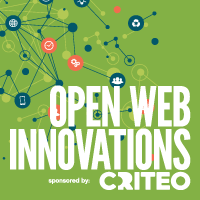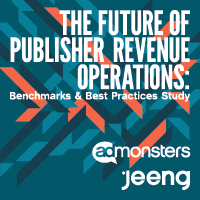 |
November 12, 2021 |
|
| |
 |
Putting Contextual in Context: Can Standardized Definitions and Taxonomies Lead to Scale? |
| Whether it's evaluating contextual as a key performance driver amidst the decline of third-party cookies and mobile identifiers, or new use cases—like extending contextual audiences into CTV—there is so much more to consider about the practice of segmenting and analyzing content. We caught up with Michael Guzewicz, Director of Strategic Partnerships at OpenX, to talk about how the company is working to redefine contextual in conjunction with publishers. Read more. |
|
 |
A Publisher’s Guide to Supply Path Optimizations: A Case Study |
| SPO sounds like an activity best left to DSPs. After all, they’re the ones with the AI-powered algorithms that focus on winning ad placements for advertisers. SPO actually requires teamwork amongst all parties, especially those on the sell-side, as Criteo discovered when it tested various SPO strategies and measured the efficiencies that resulted. Done right, SPO offers increased transparency and accountability—beneficial to both publishers and advertisers. Read more. |
|
 |
The Future of Publisher Revenue Operations: Benchmarks & Best Practices |
| From third-party cookie deprecation to ColoPA, CCPRA, Apple ATT, and the looming antitrust pressure on Google and Facebook, the business of digital publishing is being rebuilt. And while there’s no such thing as a crystal ball, AdMonsters has partnered with Jeeng to come up with the next best thing: A special report powered by insights from publisher teams that are navigating these changes now – along with the solutions and strategies they’re excited about for the future. Read more. |
|
|
|
 |
| Top Stories |
 |
|
The explosion in the blockchain-based marketing landscape has brought an interesting dynamic to the already complex world of digital advertising. There's been a lot of hype, a lot of hot air, a lot of learning, and a few solutions showing early promise around this new and emerging technology. Blockchain-based advertising solutions have presented bold visions that aim to prove that they can disintermediate, bring transparency to the supply chain, reduce fraud, and bring new opportunities to market. With much focus on the immediate problems that this technology aims to remedy, there’s a more fundamental shift taking place in the evolution of the web toward a new, user-controlled web3 Internet. Read more. |
|
The sheer number of proposed solutions to the third-party cookie almost guarantees that there will be no single winner and that publishers will need to adopt a multi-point approach to meet the needs of their ad partners. Figuring out what that exact approach needs to be will require serious testing and lots of trial and error. So how should publishers get started on their journey towards the post-cookie reality—and what does a comprehensive identity strategy look like? Read more. |
|
In an unredacted lawsuit in the U.S. District Court of the Southern District of New York, it was discovered that Google takes between 22-42% of each ad transaction that moves through its system. This is anywhere between two and four times the amount rival ad exchanges take. In Q3 2018, the search giant served 75% of all ads seen on the internet and typically owns 80% of auctions on its exchange. Read more. |
|
|
|
 |
|
|
|